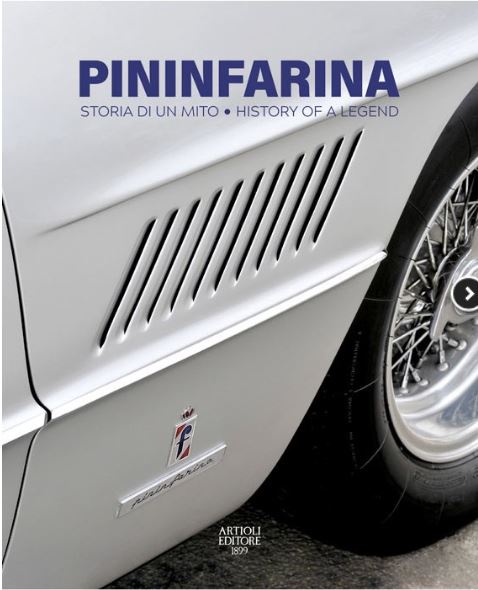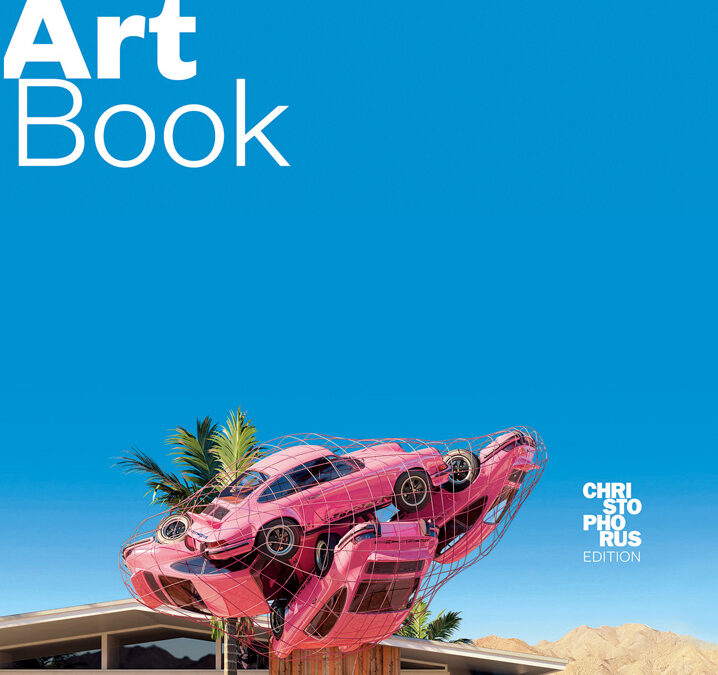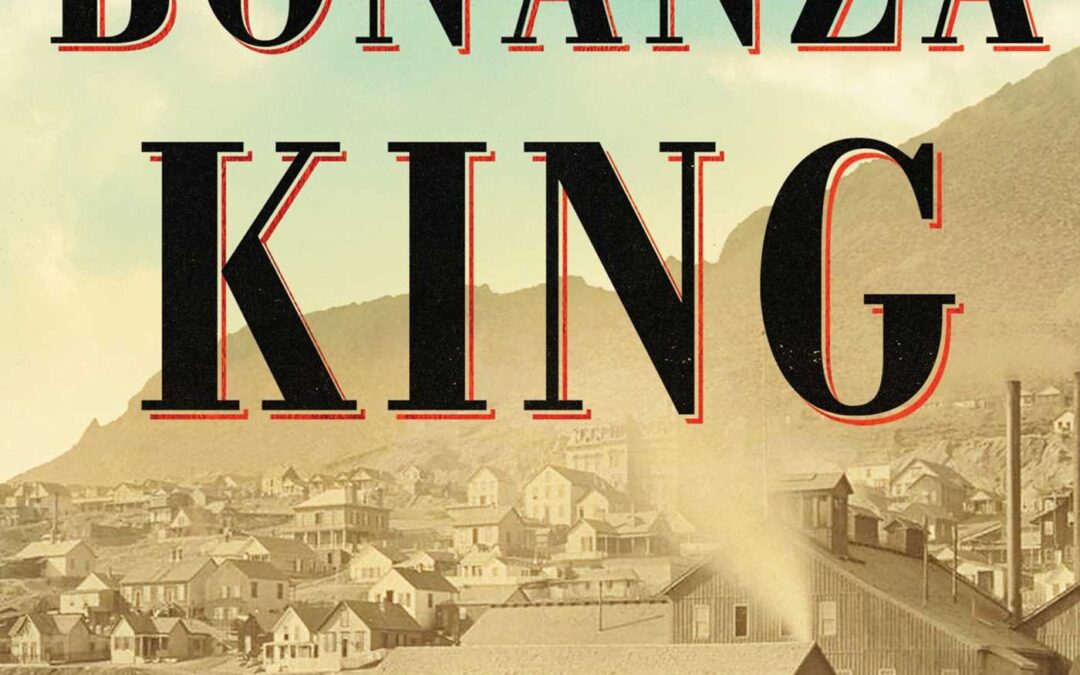
A monumentally researched biography of one of the nineteenth century’s wealthiest self-made Americans…Well-written and worthwhile” (The Wall Street Journal) it’s the rags-to-riches frontier tale of an Irish immigrant who outwits, outworks, and outmaneuvers thousands of rivals to take control of Nevada’s Comstock Lode.
Born in 1831, John W. Mackay was a penniless Irish immigrant who came of age in New York City, went to California during the Gold Rush, and mined without much luck for eight years. When he heard of riches found on the other side of the Sierra Nevada Mountains in 1859, Mackay abandoned his claim and walked a hundred miles to the Comstock Lode in Nevada.
Over the course of the next dozen years, Mackay worked his way up from nothing, thwarting the pernicious “Bank Ring” monopoly to seize control of the most concentrated cache of precious metals ever found on earth, the legendary “Big Bonanza,” a stupendously rich body of gold and silver ore discovered 1,500 feet beneath the streets of Virginia City, the ultimate Old West boomtown. But for the ore to be worth anything it had to be found, claimed, and successfully extracted, each step requiring enormous risk and the creation of an entirely new industry.
Now Gregory Crouch tells Mackay’s amazing story—how he extracted the ore from deep underground and used his vast mining fortune to crush the transatlantic telegraph monopoly of the notorious Jay Gould. “No one does a better job than Crouch when he explores the subject of mining, and no one does a better job than he when he describes the hardscrabble lives of miners” (San Francisco Chronicle). Featuring great period photographs and maps, The Bonanza King is a dazzling tour de force, a riveting history of Virginia City, Nevada, the Comstock Lode, and America itself.
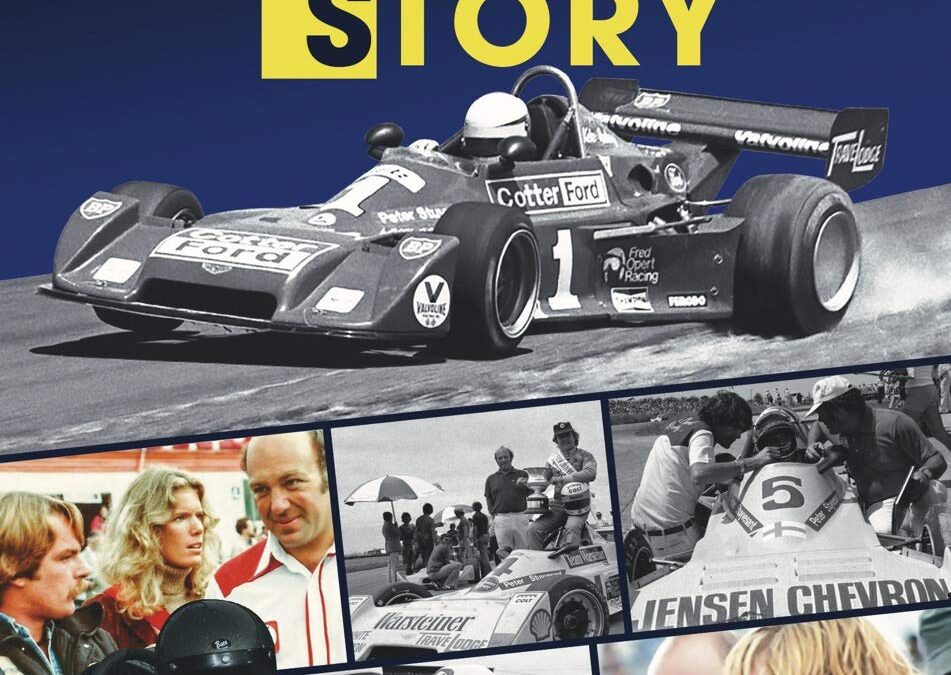
The engaging story of Fred Opert, whose brief time in a New York jail led him into a roller-coaster life of automobiles and motorsport.
Opert’s journey took him from a brief stint in a New York jail, to a successful career as race-car importer/dealer, race team owner and F1 team manager, before tragedy caused him to walk away from the sport he loved. This fascinating biography follows Fred Opert’s whirlwind lifestyle, talent-spotting successes, and the trials and tribulations of managing the ATS F1 team. Detailing the drivers who came up through the ranks with Opert, the book features interviews with many of those who worked with him. It has been written with the co-operation of Opert’s family, friends and ex-employees.
Forewords by Nico Rosberg, Alan Jones MBE and Keke Rosberg.
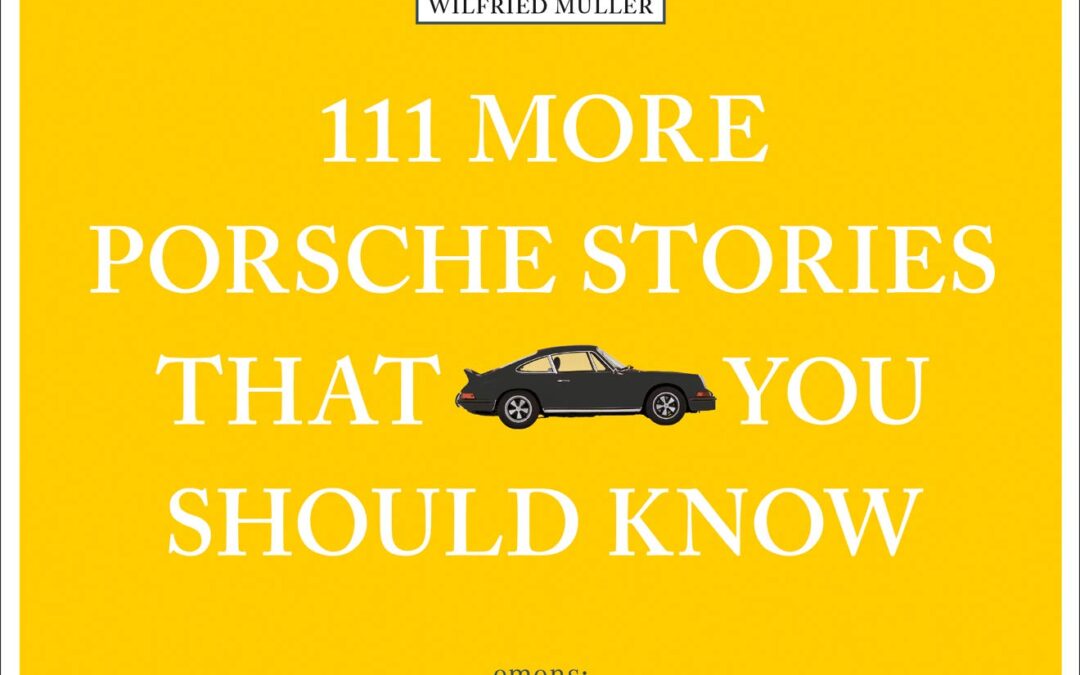
• The ultimate insider’s guide to Porsche – the stories behind the legend
• Following on from the incredible success of Volume 1
• 111 more insider stories from the dream factory
• From the Coffee Tractor to the first epic turbo victory and the e-revolution
• Fully illustrated with 111 full-page color photographs
Here are 111 more gripping Porsche Stories that afficionados of the Stuttgart brand and sports car enthusiasts should know. Wilfried Müller tells the stories of very individual characters – no matter if in the race car cockpit or on the executive floors of the Stuttgart factory, the New York showroom or the Santa Ana racing headquarters in California. Meet Mark Donohue, Dan Gurney, Alwin Springer, Max Hoffman, Jackie Oliver, Brian Redman, Stefan Bellof, Björn Waldegård, Valentin Schäffer and many more. Enjoy the anecdotes of race cars dubbed Mickey Mouse or Kangaroo, Earl Rossi’s 917 on the French Autoroute, tales from 10,000 mile rallies, Porsches that handled best when going 1.5 mph, and Porsches that were never built. Learn about the background to America’s very own version of the legendary 962 racer, the story of the 356C SC Cabriolet, and the elusive America Roadster. Not to forget the chapter about magic Porsche words, which tell the stories of Porsche Design, “RS” or the “Schüttgut”, the Porsche family’s home base and retreat in the Austrian mountains.
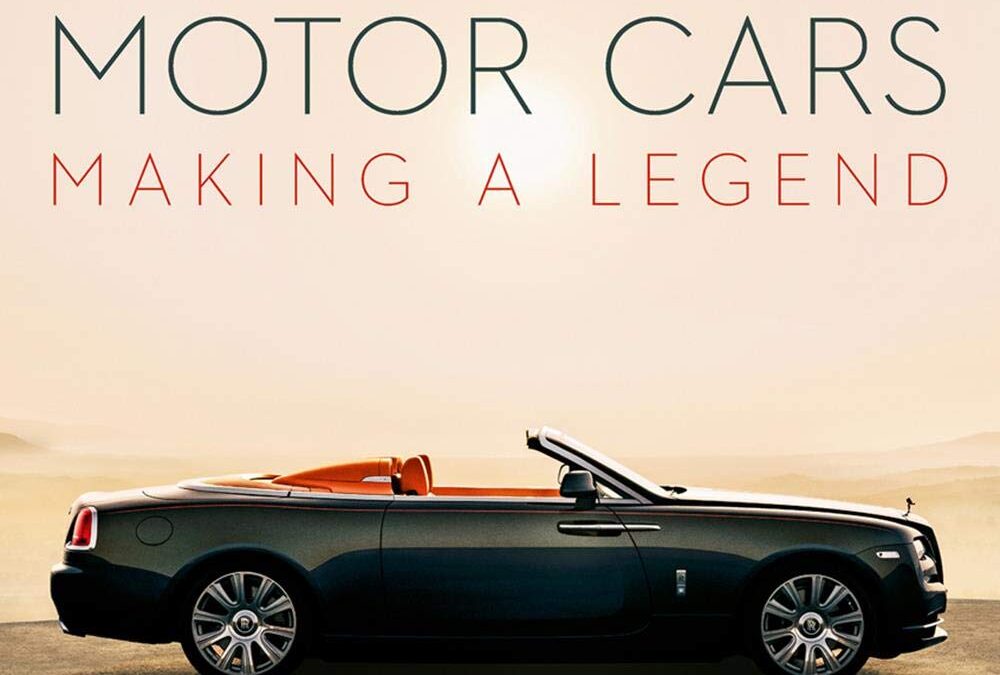
- The most prestigious motor car in the world. The true definition of luxury
- A tour of the Rolls-Royce facility and a unique insight into the manufacturing process
- A stunning collection of cars from the earliest models to those of the modern day
- A compendium of historical Rolls-Royce pictures, many unseen
- A luxurious book, beautifully designed and impeccably produced to the highest standards
- The ultimate Rolls Royce volume
Step inside a world of engineering excellence with this collection, dedicated to Rolls-Royce Motor Cars. The authors were granted unique access by the Rolls-Royce company. Detailed descriptions of the manufacturing process are set against a backdrop of heritage and prestige, including an exclusive showcase of the company’s manufacturing facility and a splendid gallery of Rolls-Royce cars dating back to sketches of work from the 1930s. This collection includes numerous unseen photos of Sir Henry Royce driving early versions of his iconic cars.
A true behind-the-scenes experience, this book introduces the reader to the Rolls-Royce master craftsmen at work. High-quality images and detailed insights reveal the process by which each car is constructed, from the 2019 Ghost Zenith back in time to the 1904 Original. Rolls-Royce opens their archive to reveal a spectacular timeline of design, providing readers with an insight into the world of those who still uphold the words of Sir Henry Royce: “Strive for perfection in everything you do”.
The contents list guides the reader through the complete construction of a car: Design and Customization, Paint and Finish, Chassis Assembly, Woodwork, Leather, Testing, The Spirit of Ecstasy Hood Ornament, and more. With a glimpse at the Rolls- Royce Training Academy and a plethora of featured cars from last year to the start of the last century, this is the ultimate Rolls-Royce collectors’ volume. Featured cars include the new Ghost (2020), the Phantom Tranquility (2019), Phantom Aviator Coupe (2012), the Phantom II Continental (1934) the AX201 Silver Ghost (1907), and many more.
Simon Van Booy is a celebrated Anglo-American author, who has won the Frank O’Connor International Short Story Award. His essays have been published in The New York Times, The Daily Telegraph, The Guardian and more.
Harvey Briggs is the Editor/Publisher of Rides & Drives, a website dedicated to motoring journeys across the world.
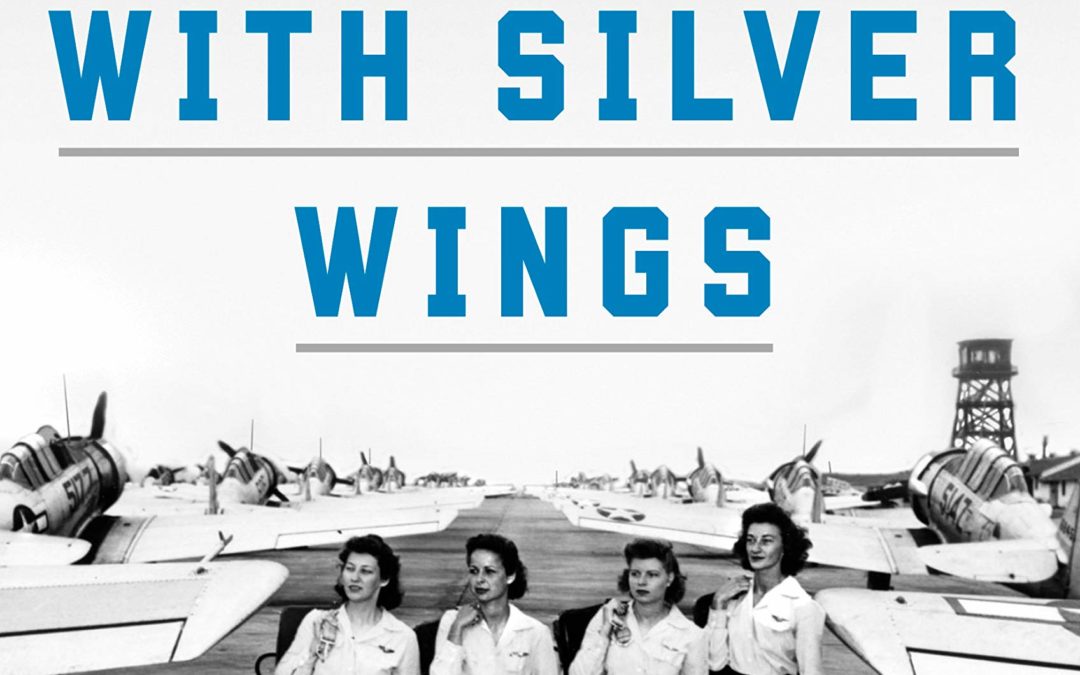
“With the fate of the free world hanging in the balance, women pilots went aloft to serve their nation. . . . A soaring tale in which, at long last, these daring World War II pilots gain the credit they deserve.”—Liza Mundy, New York Times bestselling author of Code Girls
When the Japanese attacked Pearl Harbor in December 1941, Cornelia Fort was already in the air. At twenty-two, Fort had escaped Nashville’s debutante scene for a fresh start as a flight instructor in Hawaii. She and her student were in the middle of their lesson when the bombs began to fall, and they barely made it back to ground that morning. Still, when the U.S. Army Air Forces put out a call for women pilots to aid the war effort, Fort was one of the first to respond. She became one of just over 1,100 women from across the nation to make it through the Army’s rigorous selection process and earn her silver wings.
The brainchild of trailblazing pilots Nancy Love and Jacqueline Cochran, the Women Airforce Service Pilots (WASP) gave women like Fort a chance to serve their country—and to prove that women aviators were just as skilled as men. While not authorized to serve in combat, the WASP helped train male pilots for service abroad, and ferried bombers and pursuits across the country. Thirty-eight WASP would not survive the war. But even taking into account these tragic losses, Love and Cochran’s social experiment seemed to be a resounding success—until, with the tides of war turning, Congress clipped the women’s wings. The program was disbanded, the women sent home. But the bonds they’d forged never failed, and over the next few decades they came together to fight for recognition as the military veterans they were—and for their place in history.
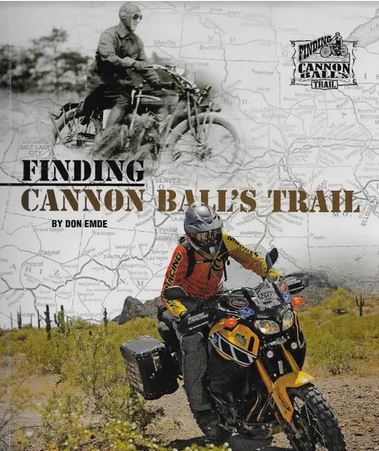
Just before midnight on May 14, 1914, a ferryboat departed from Weehawken, New Jersey and chugged along in the darkness across the Hudson River to Manhattan. On board was a tired-looking rider with an equally tired-looking motorcycle. The boat landed at ten minutes after midnight and there to greet him were representatives from the Federation of American Motorcyclists, the nation’s major motorcycle sanctioning organization. What they knew was that this rider, Erwin G. Baker, had just completed the fastest transcontinental trip in American history.
Baker’s journey of 3,497 miles had taken him 11 ½ days. And, oh, what an incredible 11 ½ days it was! After leaving San Diego on May 3rd he rode coast to coast, averaging only four hours sleep each night. Danger seemed to await him at every turn. In the Arizona desert he ran out of gas and had to push his motorcycle five miles in the sand in 119-degree heat. When he got to New Mexico he hit some rainy weather, which turned the historic Santa Fe Trail into a deep mud bog. He suffered six flat tires once on the same day, which he had to repair with the tools he carried with him, and in Pennsylvania he rode 232 miles of mud in a steady downpour. Despite all this, Baker continued east as fast as he could legally go. When he landed on Manhattan, he had smashed the current record holder’s long-standing record by more than nine days. His amazing journey concluded at the Hotel Astor in New York City where he was met by journalists wanting to get the story. One shouted out that he had “shot across the country like a cannon ball.” He was forever more Cannon Ball Baker!
In 2011, Don Emde, a former winner of the prestigious Daytona 200 motorcycle race and 1999 Inductee to the Motorcycle Hall of Fame, embarked on a multi-year project to understand the riding conditions and retrace the route that Cannon Ball Baker had taken in 1914. Using modern day computer search tools, GPS, and current adventure-style motorcycles, he and an assistant, Joe Colombero, logged numerous miles in the California and Arizona desert to work out what remains of the dirt roads that Baker had ridden. Their research ultimately took them on a ride all the way to New York City on the same route that Baker had taken. Their discoveries and difficulties is a great story in itself. Finally, in 2014, Emde led a group of 30 motorcyclists on a celebration ride from San Diego to New York City, just as Baker had done a century before. The group departed on May 3rd—100 years to the minute from when Cannon Ball had left San Diego—and arrived in New York just as he had on May 14th.
This is the story of three epic motorcycle rides across America.
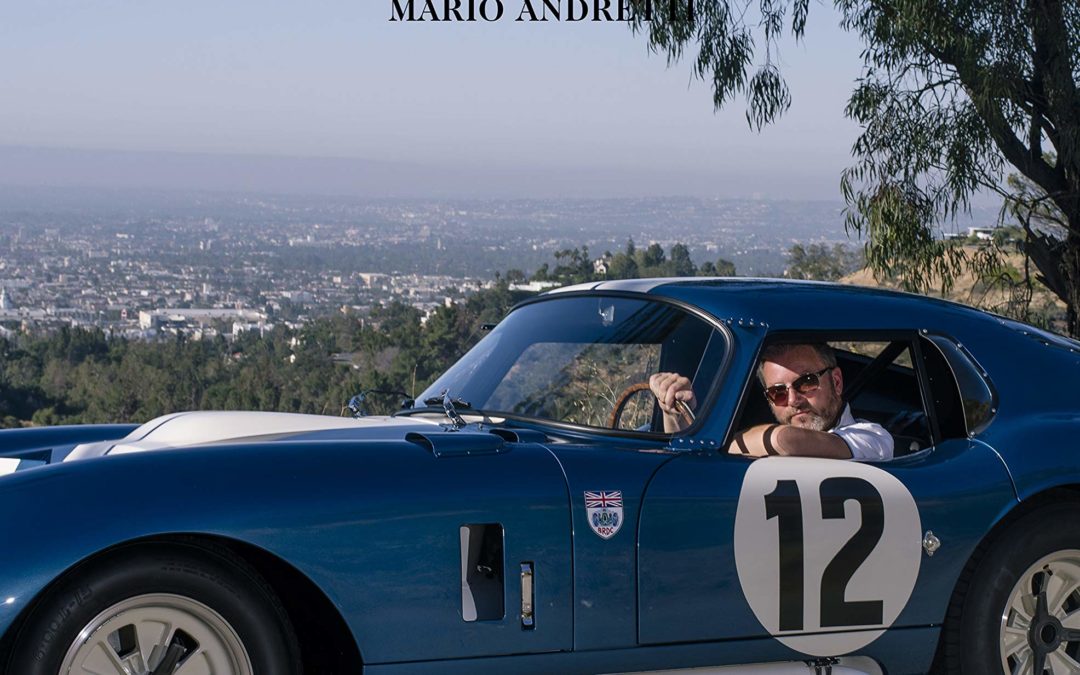
This collection of stories profiling one hundred beautiful vehicles (and their owners) is the ultimate gift book for car lovers.
New York Times best-selling author and popular Wall Street Journal “My Ride” columnist A.J. Baime selects the one hundred cars, motorcycles, and other vehicles to fill the dream garage.
Stunning photography and Baime’s engaging essays celebrate everything drivers love about their cars–from technical specifications to satisfy gearheads to intangibles like a driver’s relationship with his or her car–making it truly “my ride.”
You want fast? Step on the gas in a Koenigsegg CCX, ’87 Lamborghini, or 1970 Pontiac GTO. You want classic? Here are the keys to a ’62 Corvette, ’57 Thunderbird, or 1930 BMW–the oldest Bimmer in the United States. You want cool? Take a ’64 Shelby Cobra, Tesla Model X, or Aston Martin Vulcan for a spin. You want one-of-a-kind? How about a ’52 Seagrave fire truck, ’73 VW Thing, or the Batmobile?
You also get to meet the owners. There’s the story of a pizza-delivery man who dodges polar bears in his Hyundai in Barrow, Alaska; an NBA star who endures Los Angeles traffic by having his Tesla drive for him; and a retired Kentucky entrepreneur with a 22-foot-long 1937 Cadillac, which he calls “the biggest, baddest car that could exist.”

Along with three fellow motor racing enthusiasts, Steve Matchett – Formula 1 world champion mechanic; accomplished television broadcaster; and best-selling author – is trapped overnight in New York: a fogbound JFK airport. With no sign of the weather improving, talk between the stranded passengers inevitably turns to Formula 1. During the course of their cloistered night, with conversation fueled by regular trips to the departure lounge bar, our protagonists draw on Matchett’s encyclopedic knowledge of grand prix engineering, his easy familiarity with F1 paddock life, to piece together the perfect dream-team Formula 1 race car.By use of his enviable signature talent, his ability to explain complex issues using straightforward, uncomplicated language, Steve Matchett shows us how the various F1 teams have arrived at their current state-of-the-art designs – lays out exactly how a championship winning grand prix car is assembled.Originally published by Orion (of London) in 2004, The Chariot Makers is Steve Matchett’s third book. Along with Life in the Fast Lane, and The Mechanic’s Tale, this compelling, insightful story – its warm text reading as a novel – forms the final installment of the author’s entertaining, timeless, and highly acclaimed Formula 1 trilogy.
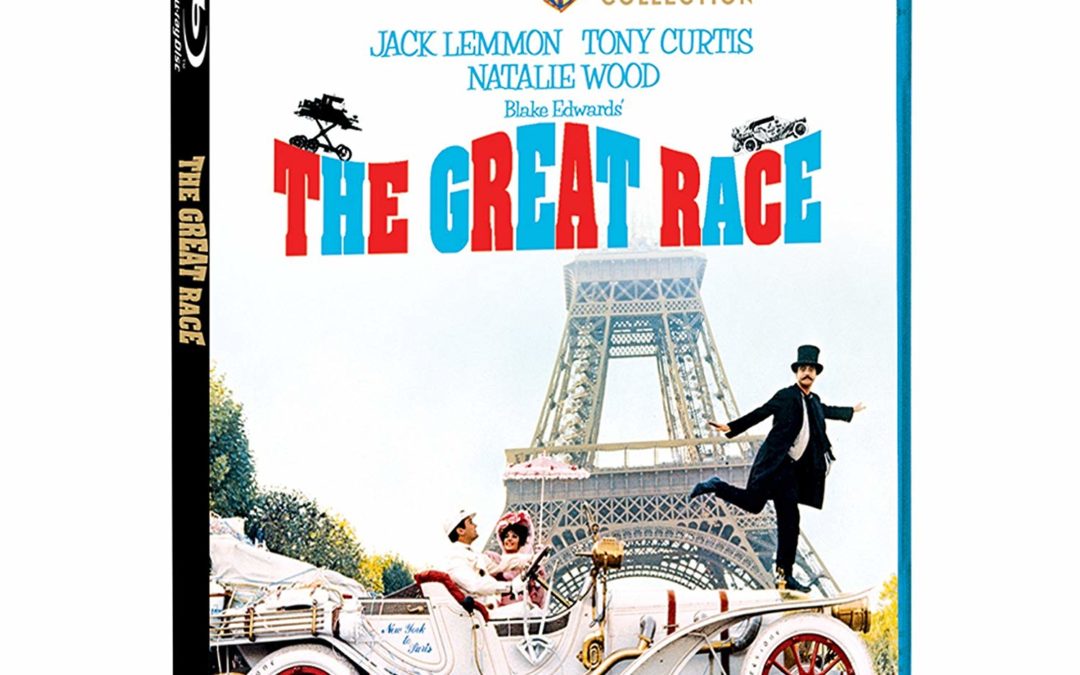
Tony Curtis stars as The Great Leslie, a hero among heroes whose purity of heart is manifested by his spotlessly white wardrobe. Leslie’s great rival, played by Jack Lemmon, is Professor Fate, a scowling, mustachioed, top-hatted, black-garbed villain. Long envious of Leslie’s record-setting accomplishments with airships and sea craft, Professor Fate schemes to win a 22,000-mile auto race from New York City to Paris by whatever insidious means possible. The problem is that Fate is his own worst enemy: each of his plans to remove Leslie from the running (and from the face of the earth) backfires. Leslie’s own cross to bear is suffragette Maggie Dubois (Natalie Wood), who also hopes to win the contest and thus strike a blow for feminism. The race takes all three contestants to the Wild West, the frozen wastes of Alaska, and, in the longest sequence, the mythical European kingdom of Carpania. This last-named country is the setting for a wild Prisoner of Zenda spoof involving Professor Fate and his look-alike, the foppish Carpanian king. When Leslie and Fate approach the finish line at the Eiffel Tower, Leslie deliberately loses to prove his love for Maggie. Professor Fate cannot stand winning under these circumstances, thus he demands that he and Leslie race back to New York.
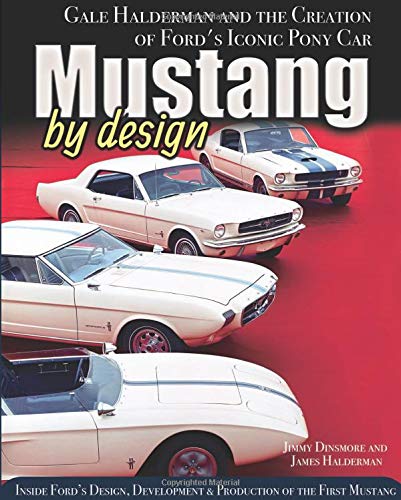
Without question, the 1964-1/2 Mustang is one of the most important and influential cars in automotive history. When Ford launched the Mustang, it created an automotive revolution. Award-winning designer and stylist Gale Halderman was at the epicenter of the action at Ford, and, in fact, his initial design sketch formed the basis of the new Mustang. He reveals his involvement in the project as well as telling the entire story of the design and development of the Mustang.
Authors and Mustang enthusiasts James Dinsmore and James Halderman go beyond the front doors at Ford into the design center, testing grounds, and Ford facilities to get the real, unvarnished story. Gale Halderman offers a unique behind-the-scenes perspective and firsthand account of the inception, design, development, and production of the original Mustang. With stinging losses from the Edsel fresh in minds at Ford, the Mustang project was an uphill battle from day one. Lee Iacocca and his assembled team had a herculean task to convince Henry Ford II to take a risk on a new concept of automobile, but with the help of Hal Sperlich’s detailed market research, the project received the green light. Henry Ford II made it clear that jobs were on the line, including Iacocca’s, if it failed.
The process of taking a car from sketch to clay model to prototype to preproduction and finally finished model is retraced in insightful detail. During the process, many fascinating experimental cars, such as the Mustang I two-seater, Mustang II prototype, Mustang Allegro, and Shorty, were built. But eventually the Mustang, based on the existing Ford Falcon, received the nod for final production. In a gala event, it was unveiled at the 1964 World’s Fair in New York. The Mustang received public accolades and critical acclaim, and soon it became a runaway hit. After the initial success, Ford designers and Gale Halderman designed and developed the first fastback Mustangs to compliment the coupes. The classic Mustang muscle cars to follow, including the GT, Mach 1, and others, are profiled as well.
The Mustang changed automotive history and ushered in the pony car era as a nimble, powerful, and elegantly styled sports coupe. But it could so easily have stumbled and wound up on the scrap pile of failed new projects. This is the remarkable and dramatic story of how the Mustang came to life, the demanding design and development process, and, ultimately, the triumph of the iconic American car.

From Ross Brawn—one of the most successful figures in Formula One auto racing—comes a compelling insider’s account of what it takes to win, featuring practical advice for overcoming obstacles and becoming a champion both on and off the racetrack.
Formula One racing is a wildly popular global sport with millions of fans and billions more engineering dollars at stake. For four decades, Ross Brawn has been one of the most innovative technical directors and team principals in the high-stakes world of Formula One. He is considered the most successful competitor in the history of Formula One to date, and “the closest thing there is to a certifiable genius” (The Wall Street Journal). Leading Benetton, Ferrari, Honda, and Mercedes, he has worked with legendary drivers such as Michael Schumacher, Jenson Button, and Lewis Hamilton to make them Grand Prix champions. Now, in this fascinating book, presented as a frank conversation between Brawn and fellow Formula One competitor Adam Parr, Brawn reflects upon his career, shares the philosophies and methods that led to his success, and offers lessons that every leader working with teams—at work, play, or home—can use to achieve their own goals, too.
Brawn and Parr share details about the unique pressures of Formula One racing and the intense, cutthroat world they inhabited, where coming in second place is never good enough. Just as Phil Knight recounted his accomplishments and devastating setbacks in the building of the Nike brand in the New York Times bestseller Shoe Dog, this book also provides a blueprint for leading teams, imparting lessons such as “Embrace Humility,” “Invest in People and Culture,” “Strive for Simplicity, Manage Complexity,” and much more.
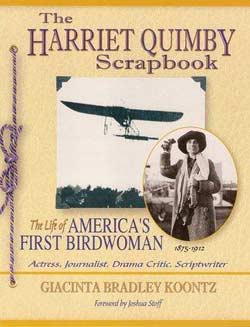
This first complete biography of Harriet Quimby is visually charming for all ages and a handy reference for entertainment, photography, travel, and aviation historians. With over 150 vintage newspaper clips and dozens of never before published photographs, it’s a must for every fan of early aviation.
Carrie Vanderbilt’s pictures of her best friend, Harriet Quimby, remained in storage for over 85 years. These photographs and dozens of other never-before published images are artfully presented with vintage newspaper clippings and Quimby family documents, as if Quimby had pasted them into her own scrapbook. Reprinted for the first time are Harriet Quimby’s seven silent film treatments for American Biograph.
Quimby was disarmingly unique. Ignoring criticism, and creating her own sense of style, she owned several cars, learned how to repair them, and encouraged other women to do the same. She smoked cigarettes, lived alone, and lied about her age. Cleverly calculating her professional career, she represented all that was independent and modern, yet she distanced herself from feminist causes.
Harriet Quimby’s life touched the fringes of the Civil War, the Industrial Revolution, the Ragtime Ear, and the new Age of Aviation. Moving from Michigan to California and finally to New York City during 1903, she was prepared to take it by storm. She had no alternate plan.
New York loved her. America admired her. The world was her oyster until tragedy struck. Before her death at age 37, her potential for continued fame, fortune, and contributions to U.S. history was limitless.
Scientific American eulogized that her death, ” while fitting for an athlete, should never have been the lot of such a fragile flower of sunny California.”.
This scrapbook represents more than the life of one woman. It is our cultural heritage.
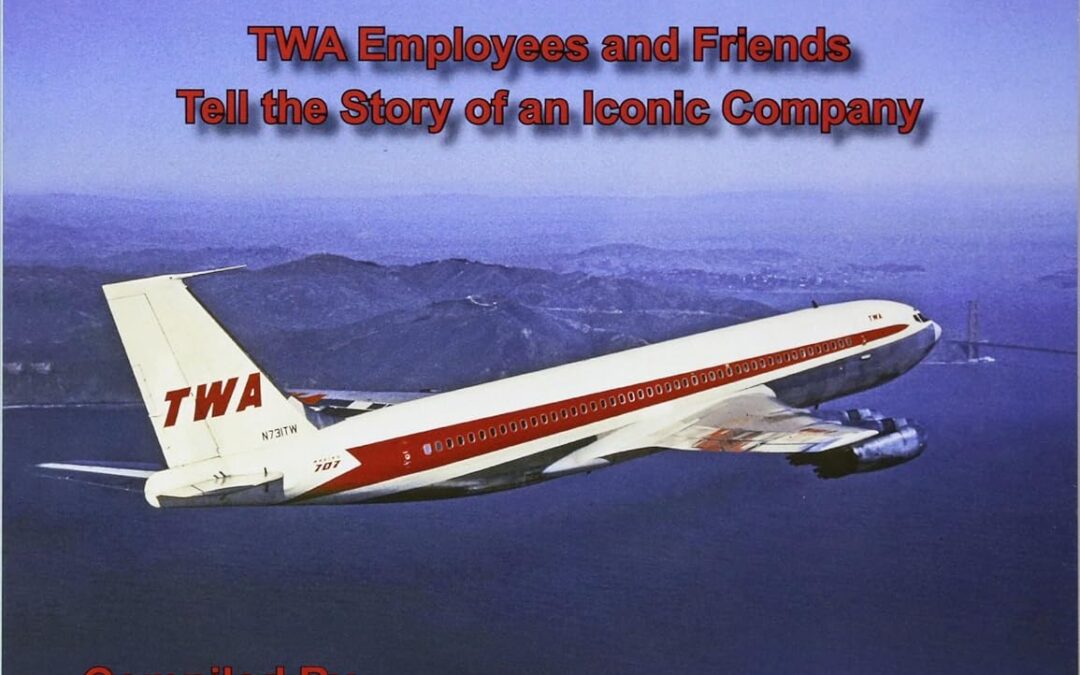
TRANS WORLD AIRLINES – A Book of Memories is a history of TWA offered in a different and most unique format… through the eyewitness experiences of its flight crews and ground workers, as well as friends of the company who share their reminiscences.
TWA was a pioneer and an important domestic and international airline that played prominently in developing commercial aviation. This book introduces the founders of the airline and some of the early pilots, flight attendants and mechanics who set the standard. We also glimpse inside to the legendary and colorful Howard Hughes, who shaped the airline and campaigned for the Lockheed Constellation. We also learn about Carl Icahn and his controversial leadership of the airline.
Jon Proctor, who devoted twenty-seven years of his professional life to TWA, contributed several stories, including a description of TWA’s famous Royal Ambassador Service and the Grand Canyon crash. Jon has also contributed many of the beautiful photographs of TWA aircraft that grace the pages of this book.
Another TWA veteran, George Hamlin, also contributed many images, as well as stories about the iconic Flight Center at New York International Airport. Other contributions detail many of the VIPs who traveled on TWA, including White House press charters for Presidents Johnson and Nixon; plus Hollywood celebrities, and legendary figures such as Bing Crosby and David Letterman.
These are stories from the heart, from employees who dedicated their entire professional careers to the airline, involved personally with the incredible achievements that made TWA the carrier it was. The people of TWA, numbering in the tens of thousands, literally spanned the globe over the years. We invite readers to enjoy these stories, which revisit an era that will never be replicated.
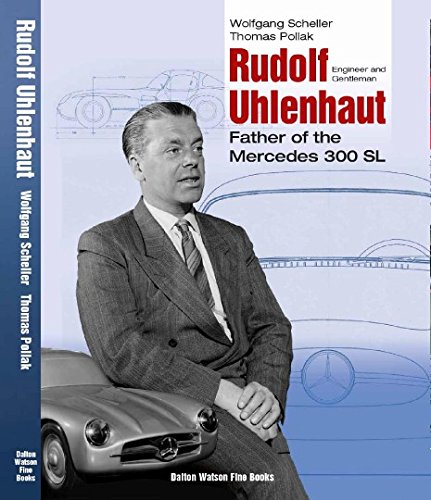
Born 1906 in London as the son of an English mother and a German father, Rudolf Uhlenhaut was an engineer and designer for Daimler-Benz. He became famous for his achievements regarding the Silver Arrows, the 300 SL with the famous gull wing doors, the legendary Mercedes-Benz 300 SLR, known as the “Uhlenhaut Coupé” and the various experimental C 111 versions well-known for several speed records. Uhlenhaut joined Daimler-Benz in 1931 after finishing his studies of mechanical engineering in Munich. In 1936 he took over as head of the racing department and conducted the Silver Arrows and Rudolf Caracciola to their 1937 European championship. Based upon the 300 SL “Gullwing”, initially a thoroughbred racing sports car, he created the road versions W198 and the smaller open-topped W121, both launched at the International Motor Sports Show in New York 1954. Though Uhlenhaut never owned a car of his own, his official company car, a 300 SLR with a top speed of 290 km/h became famous as the Uhlenhaut Coupé – the fastest car of its day authorized for road use! This first ever comprehensive biography of Rudolf Uhlenhaut, illustrated with many previously unpublished photographs, depicts his life and technical achievements, presenting a complete compilation of all the patents he filed and exploring their significance. It also draws a vivid picture of the person behind the technical innovations and tries to explore his character and motivation.

From the acclaimed author of “Birdmen” comes a revelatory new history of the birth of the automobile, an illuminating and entertaining true tale of invention, competition, and the visionaries, hustlers, and swindlers who came together to transform the world.
In 1900, the Automobile Club of America sponsored the nation s first car show in New York s Madison Square Garden. The event was a spectacular success, attracting seventy exhibitors and nearly fifty thousand visitors. Among the spectators was an obscure would-be automaker named Henry Ford, who walked the floor speaking with designers and engineers, trying to gauge public enthusiasm for what was then a revolutionary invention. His conclusion: the automobile was going to be a fixture in American society, both in the city and on the farm and would make some people very rich. None, he decided, more than he.
“Drive!” is the most complete account to date of the wild early days of the auto age. Lawrence Goldstone tells the fascinating story of how the internal combustion engine, a theory looking for an application, evolved into an innovation that would change history. Debunking many long-held myths along the way, “Drive!” shows that the creation of the automobile was not the work of one man, but very much a global effort. Long before anyone had heard of Henry Ford, men with names like Benz, Peugeot, Renault, and Daimler were building and marketing the world s first cars.
Goldstone breathes life into an extraordinary cast of characters: the inventors and engineers who crafted engines small enough to use on a horseless carriage; the financiers who risked everything for their visions; the first racers daredevils who pushed rickety, untested vehicles to their limits; and such visionary lawyers as George Selden, who fought for and won the first patent for the gasoline-powered automobile. Lurking around every corner is Henry Ford, a brilliant innovator and an even better marketer, a tireless promoter of his products and of himself.
With a narrative as propulsive as its subject, “Drive! “plunges us headlong into a time unlike any in history, when near-manic innovation, competition, and consumerist zeal coalesced to change the way the world moved.
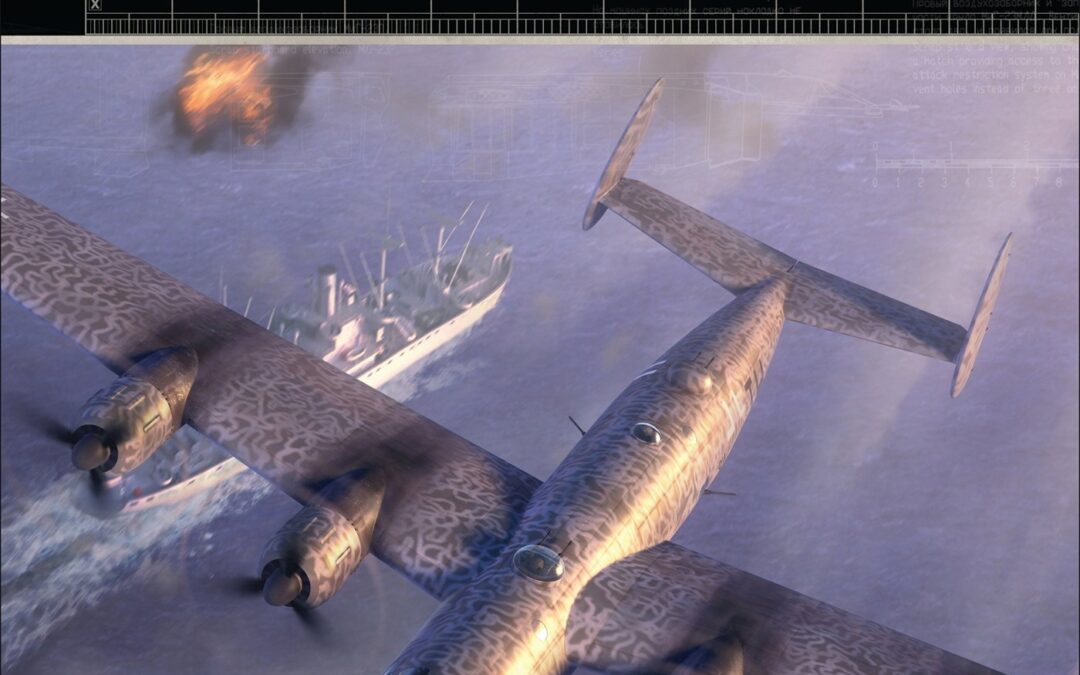
As Europe plunged into World War II, Hitler ordered the development of a hi-tech secret weapon capable of taking the war across the Atlantic–the Messerschmitt Me 264. Chosen from designs for an “Amerika Bomber” tendered by Messerschmitt, Junkers, and Focke-Wulf, this ultra-long-range aircraft would be capable of attacking cities in the United States. Just one month before the attack on Pearl Harbor and the American entry into World War II, Hitler was promising, privately, to wage a “new war” against the USA after his victories in Europe. Dazzling digital artwork and 50 rare archival photographs perfectly complement the detailed analysis offered by Robert Forsyth as he examines the development, intended role, and influence of the aircraft that Hitler planned to use to bomb New York City.
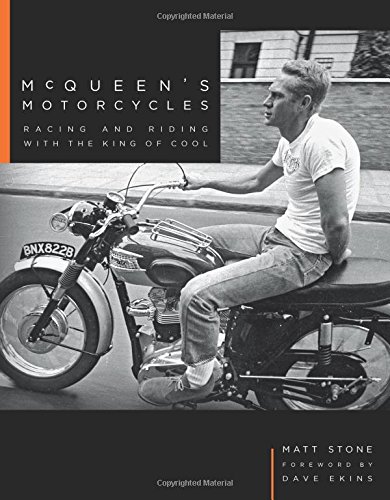
The long-departed Steve McQueen is still the coolest man on two wheels.
Even thirty years after his death, Steve McQueen remains a cultural icon. His image continues to appear in advertising and pop culture and his fan base spans from car lovers to racing enthusiasts to motorcycle obsessives. In his movies, McQueen’s character always had an envy-inducing motorcycle or car, but in his personal life, motorcycles were always McQueen’s first true love. McQueen’s Motorcycles focuses on the bikes that the King of Cool raced and collected.
From the first Harley McQueen bought when he was an acting student in New York to the Triumph “desert sleds” and Huskys he desert raced all over California, Mexico, and Nevada, McQueen was never without a stable of two wheelers. His need for speed propelled him from Hollywood into a number of top off-road motorcycle races, including the Baja 1000, Mint 400, Elsinore Grand Prix, and even as a member of the 1964 ISDT team in Europe. Determined to be ahead of the pack, McQueen maintained his body like it was a machine itself. He trained vigorously, weight lifting, running, and studying martial arts. Later in his life, as he backed away from Hollywood, his interests turned to antique bikes and he accumulated an extensive collection, including Harley-Davidson, Indian, Triumph, Brough Superior, Cyclone, BSA, and Ace motorcycles.
Today, McQueen still has the Midas touch; anything that was in the man’s possession is a hot commodity. McQueen’s classic motorcycles sell for top dollar at auctions, always at a multiple of what the same bike is worth without the McQueen pedigree. McQueen’s Motorcycles reveals these highly sought-after machines in gorgeous photography and full historical context.
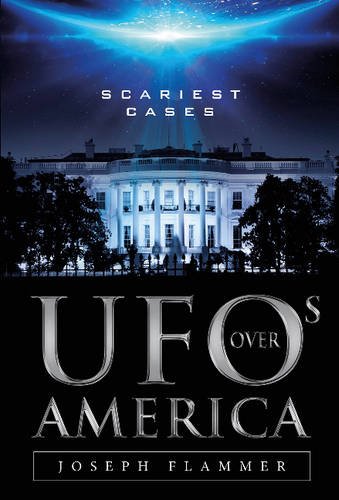
In this collection of terrifying possibilities, follow a New York Field Investigator for the Mutual UFO Network (MUFON) as he investigates and discusses over 70 important Ufology topics that gravely affect the US. This book is broken into three parts―The Biggest, Baddest, Scariest UFO Events In America; Crashes, Chases, Shoot-downs, and Mysteries; and Alien Abductions. Find out how ordinary citizens are involved with the Greys, insectoids, reptilians, and Nordics. Follow military jets, trying to protect the populace, as they hunt down and chase alien craft; and meet abductees who may never be the same after horrifying nonhuman encounters. Discover that government agents may be around you: soldiers of the Anti-UFO-Army. Be careful how you approach the study of UFOs and aliens. The author believes that if you want to meet extraterrestrials and experience their high strangeness or abductions, you will; find out how at your own risk
